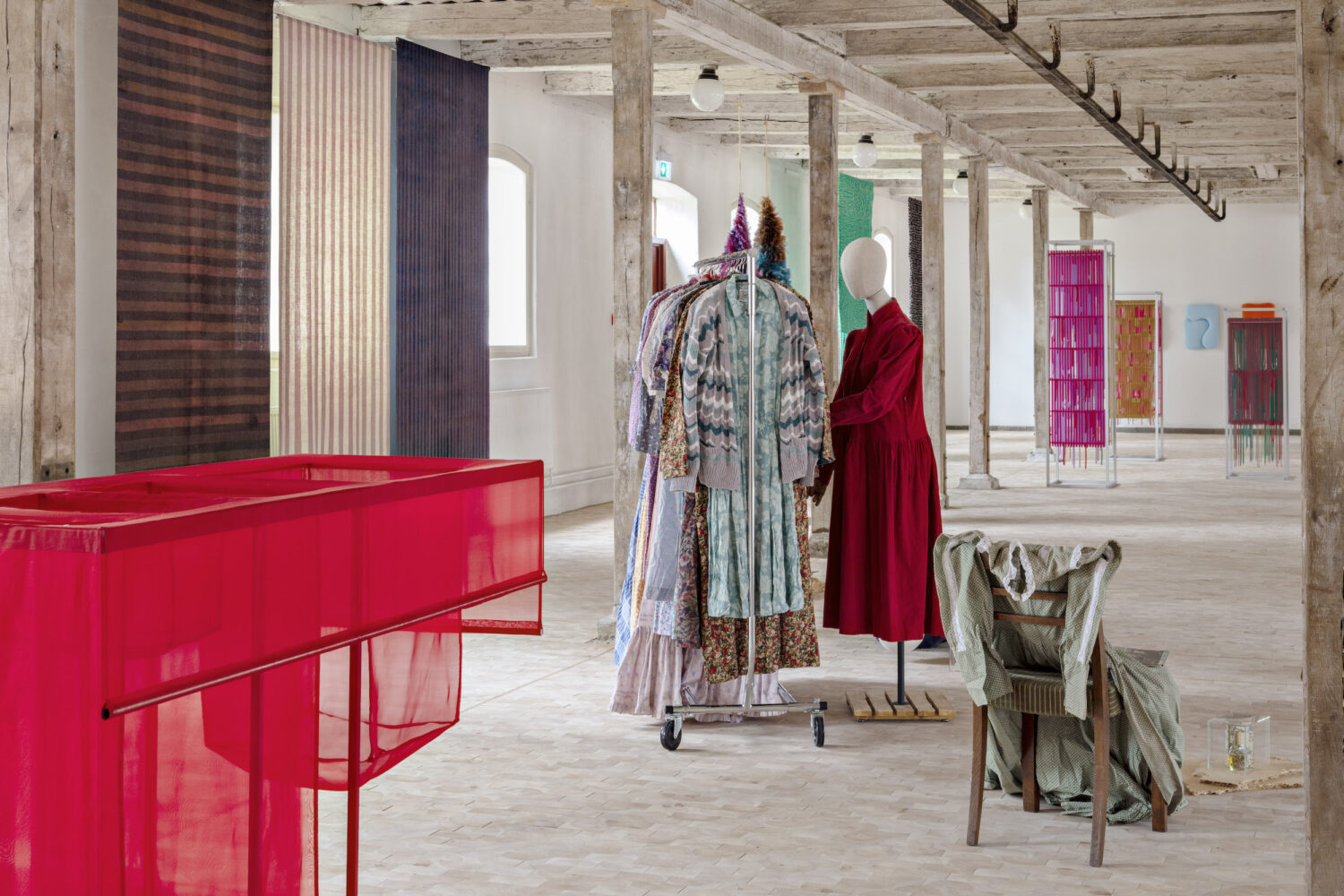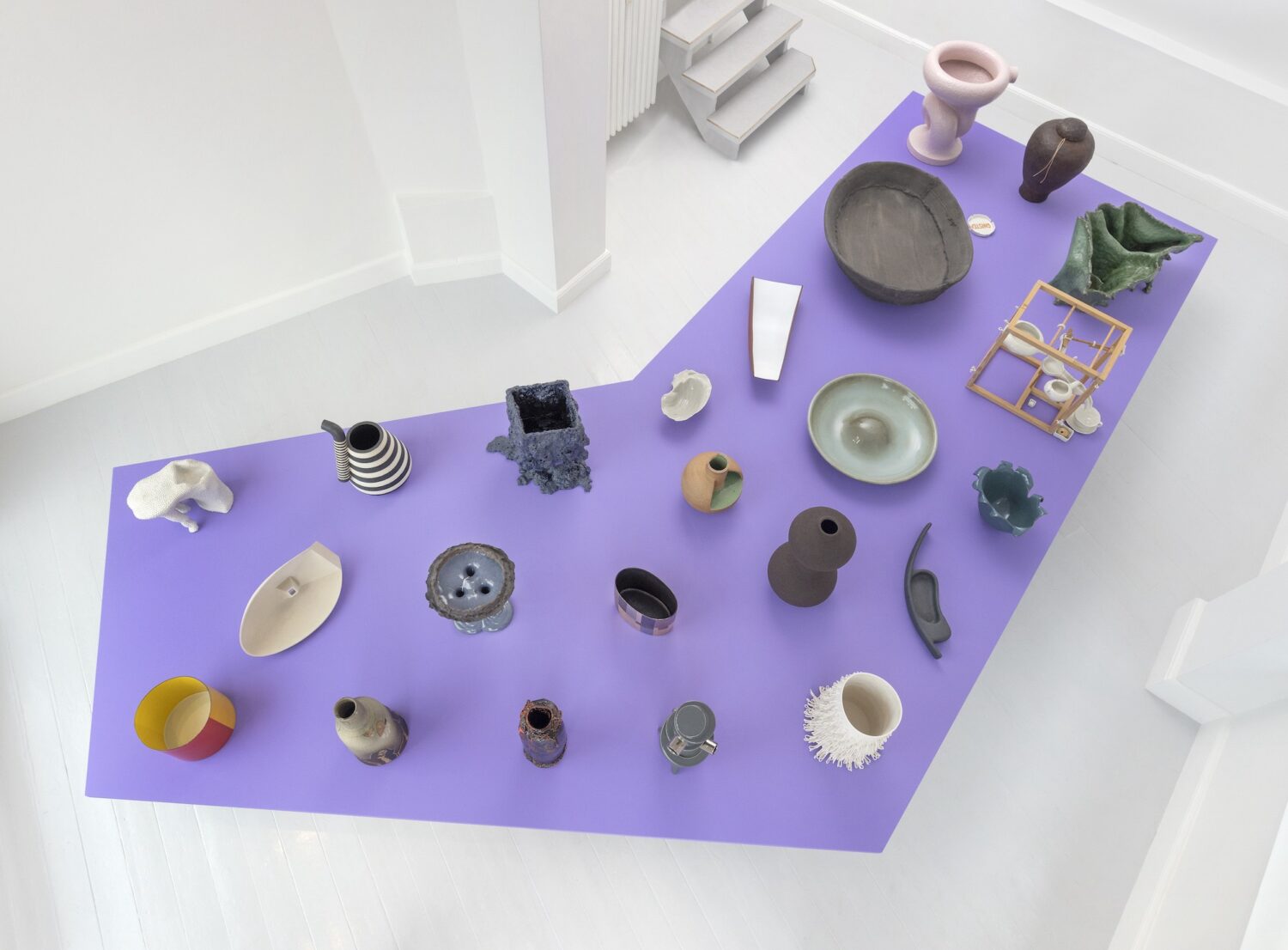I love the newly opened exhibition in Anexet and Rustikken at Lundsgaard Estate, a few minutes walk from the Great Belt. 40 textile works by 32 artists are hung, laid out or set up in the two-storey former stable building of the estate, and four outdoor works act as a kind of signpost as you enter the estate grounds.
According to the press release, This New World – Mostly Textile will focus on textiles as an open field across disciplines and show that textiles have the potential to intervene in the social sphere and be in contact with people’s everyday lives.
The ‘new world’ referred to in the title is the synthesis of the arts that designers such as Verner Panton and Nanna Ditzel and genre-breaker Gunnar Aagaard Andersen sought to channel into the real world. The latter is described in Vibeke Petersen Gether’s book about GAaA (2016).
Panton and Ditzel are not represented in the exhibition, but we should probably understand that the names send a signal about the context in which the curators would like their exhibition to be placed. The exhibitions Verner Panton – Colours a New World (2021/2022) and Nanna Ditzel – Design to New Heights (2023-2024) at Trapholt are obvious references when the curators write as they do, although the set-up at Lundsgaard is of course completely different.

Works and surroundings meet
The newly laid wooden floor in Rustikken, which makes up the lower exhibition floor, fills the room with its scent, while the works have plenty of space around them. Allowing the scales of the landscape and courtyard to blend with the exhibition is a compelling choice when there is so much space for it.
The experience continues up the steep, neon-lit staircase to the upper floor, where the carpet image Drivebillede, Dirigeret tachisme by Gunnar Aagaard Andersen (1960/2025) acts as a welcome mat, reminding us of Aagaard Andersen’s collaboration with Egetæpper.
Upstairs, many of the exhibited textile works are suspended in the exposed wooden structure. Here, the textures and varying degrees of transparency of the works are brought into play, creating a layered effect where it is possible to see the works through each other – and where it would be really interesting to know a little more about the curators’ thoughts behind this arrangement and juxtaposition.
Mette Ussing’s fascinating five textile works, which date from the period 1965-1975, are thus not only multidimensional in their weaving, but also in their interplay and relationship to, for example, Anne Fabricius Møller’s works Traktorgang, gul and Traktorgang, grå (both 1993) further down the room.
Of more recent works that are similarly interesting for both the focussed and the peripheral gaze, I would like to mention Ellen Bangsbo’s Nettle Red (2025) and Anne-Mette Schultz’s Material Things (2025). But it feels almost unfair to emphasise some individual works over others, as the exhibition as a whole contains so much quality and so much interesting diversity.

A little communication is desired
The textures, colours and techniques of the works combine to create an exhibition of high quality. On the other hand, I would like to see more information about why the exhibition looks the way it does. What connections or debates between the works have been considered? It’s too obvious – in fact, I would have liked the various artists to be presented alongside the works. It’s a shame that this is missing at the start of the exhibition period, but it’s said to be on its way along with an exhibition catalogue.
The fact that the result is an expanded horizon is due to the fact that most of the works speak so strongly in themselves, through their materiality and presence in the space. The exhibition is highly recommended.
Facts
Udstillingen: This New World – Mostly Textile (Denne Nye Verden – Overvejende Tekstil)
Lundsgaard Gods, Kerteminde
5 April – 1 June 2025
The exhibition is curated by Torgny Wilcke, Anne Fabricius Møller and Ingrid Kæseler.
Artists:
Adam Christensen
Ane Henriksen
Anne Fabricius Møller
Anne-Mette Schultz
AVPD
Begitte Lynge Andersen
Birgitte Boesgaard
Caroline Freja Langdahl
Cecilie Bendixen & Laura Beruël
Charlotte Østergaard
Claus Egemose
Danh Vo/ Kvadrat
Ellen Bangsbo
Ellen Hyllemose
FOS
Grethe Sørensen
Gunnar Aagaard Andersen/ Ege Carpets
Hannah Heilmann
Henrik Vibskov
Iben Høj
Ingrid Kæseler
Kaj Nyborg
Kirsten Nissen
Kristine Mandsberg
Martin Erik Andersen
Mette Ussing
Mette Winckelmann
Signe Emdal
Søren Nielsen
Torgny Wilcke
Tove Storch

Photo credit Dorte Krogh.
Theme: Scenes of Crafts

Formkraft is looking to craft exhibition spaces and curators. Which venues showcase crafts? How are works curated? What are the challenges, opportunities and shortcomings? The industry is calling for an art centre that gives more space to contemporary craft and design and with strong communication.
Articles are published regularly.


